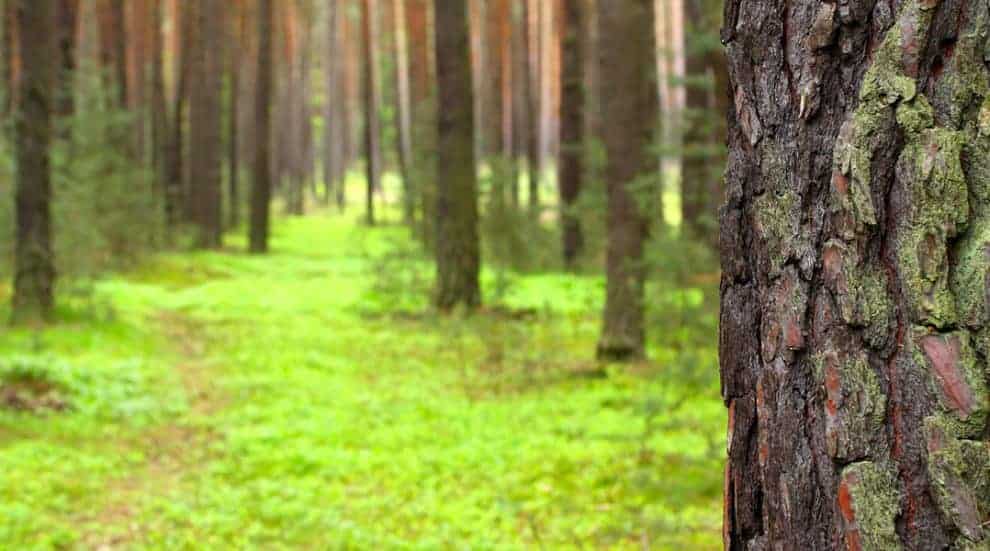Over the years, I’ve written a lot of articles and taught a lot of workshops related to forest finance and timber market analysis. This work resulted in new friendships, challenging discussions and many a barbecue lunch. However, few clients or students matched Aunt Fanny for leaving an impression.
Aunt Fanny Visits Her Forest
After two hours of driving through the forest and getting a sense for its health and condition, I pulled into a small clearing near an old hunting stand and parked the truck. From behind the seat, I pulled out my Star Wars thermos and poured two cups of coffee, handing one to Aunt Fanny.
“Nephew, talk to me. How is this forest going to make me money?” she asked.
Aunt Fanny had started out as a secretary of a local community bank. She worked her way up and retired as a regional vice president, managing bank branches throughout middle Georgia. Aunt Fanny knew her numbers.
“Okay, well let’s go over a few basics. Think of your forest of trees as an army of soldiers. It’s a factory full of workers looking to produce on your behalf.”
“You’re talking my language.”
“The challenge is to put them to work on the right things, for the right length of time, with the proper nutrition while protecting them from bugs, fire and disease.”
“Okay.”
“Over time, your trees grow in size and quality and, most importantly, value. But at some point in the future, that growth in value slows down to a point where you’d be making more money by selling the trees and putting the money in something else. So the goal here is to grow the forest to its point of maximum value in today’s dollars. Then we harvest that forest and start all over.”
“Maximize the present value of the forest, is that what you’re saying, Nephew?”
“Yes, Ma’am.”
“How exactly does the value of a forest increase? Just by growing bigger trees?”
“Setting aside the land for now, tree value changes from three things. One, volume. The trees get bigger so we have more to sell. Two, quality. The trees get more valuable as they grow from smaller, less valuable products like pulpwood into larger, more valuable logs for sawmills and plywood facilities. Three, prices.”
“How can you separate prices from quality? Sounds like you’re selling me the same story twice, Nephew.”
“Well, the thing is that prices can go up. And prices can go down. Depends on the market. So just because we’re growing better trees, it doesn’t guarantee more value for each ‘unit’ of tree. You see, together we know we can grow more trees and we can grow better trees, but we can’t control the prices. So I wanted to be clear about what we can and can’t control.”
Aunt Fanny Asks About Timber Prices
We stepped out of the truck. Aunt Fanny adjusted her aviator sunglasses, put her hands on her hips and looked up at the loblolly pine tree in front of her. “Nephew, talk to me about timber prices. What’s this pine tree worth?”
I looked up towards the top of the tree. Then I stepped past Aunt Fanny to the base of the tree while reaching into my pocket to pull out a metal D-tape.
“What’s that?” asked Aunt Fanny.
“This is a diameter tape. A D-tape,” I said. “We use it to measure a tree’s DBH. Diameter at breast height.”
“Whoa, hold it there, Nephew. How does that work? My breasts are lower to the ground than yours! Seems like we’d be getting different measurements.”
“Well, we typically measure DBH at four and a half feet off the ground, no matter how tall, or short, you are. The key is we want to be high enough off the ground to avoid measuring the butt swell of the tree.”
“Whoa, again! Breast height? Butt swell? You’re not talking to Joan Rivers here, Nephew.”
I laughed. “Different trees have different shapes, just like people. So we try to measure their size in as consistent a way as possible. Why don’t you try the D-tape and measure the tree,” I said.
“Sounds good, Nephew.” She took the tape, reached around the tree and wrapped the tape around so both ends met in front of her, even with her mouth. “Says here 11 inches. What does that tell us?”
“This tree here is pretty straight and about 50 feet tall,” I said. “No obvious defects such as forks low in the stem or big cankers. And it’s big enough for a sawmill to cut some lumber. At 11 inches, we’d call this a ‘chip-n-saw’ tree. It’s a small sawlog.”
“What’s it worth?” asked Aunt Fanny.
“Here trees get sold by the ton. A chip-n-saw tree is worth about $20 per ton. If the tree had a major defect, we send the entire stem to a pulp mill for about $10 per ton.”
“And a bigger tree?” asked Aunt Fanny.
“With a DBH above 12 inches, trees become ‘sawtimber’ and go to bigger sawmills. They could pay $30 per ton or more, depending on the size and quality.”
“So bigger is better in forestry,” she said. “That right, Nephew?”
“For the most part, yes. As long as we get there in a reasonable amount of time.”
“Nephew, your wheels are turning. What’s the rest of the story?”
“Well, if we focus too much on per ton prices, we forget the key value drivers under our control. Per unit timber prices provide an incomplete view of timberland investments.”
“Nephew, prices are important. I care about the price of milk for my Shredded Wheat, the price of gas for my 280ZX and the price of Wild Turkey for my afternoon snack. Surely timber prices matter.”
“Yes, of course. I just wanted to put the prices in context. Today’s timber price is a function of today’s technology and yesterday’s timber price is a function of yesterday’s technology. Sawmills are more efficient, and forests are more productive.”
“So you’re saying my customer needs less wood and I’m producing more? That does not sound like favorable economics,” said Aunt Fanny in her ‘banker’ voice.
“There’s a lot going on here. Mills and foresters are constantly adapting to each other. Prices go up and down over time, but we get a sense for averages and baselines. For your forest, when thinking about the returns, it’s really about cash flow per acre per year. And land appreciation, if any.”
This content may not be used or reproduced in any manner whatsoever, in part or in whole, without written permission of LANDTHINK. Use of this content without permission is a violation of federal copyright law. The articles, posts, comments, opinions and information provided by LANDTHINK are for informational and research purposes only and DOES NOT substitute or coincide with the advice of an attorney, accountant, real estate broker or any other licensed real estate professional. LANDTHINK strongly advises visitors and readers to seek their own professional guidance and advice related to buying, investing in or selling real estate.










This is an extremely astute, yet comprehensable, explanation of timber growth & market. My husband & I were in the timber business in the mid 90-s & I learned a lot about trees and the market in general. What you told Aunt Fanny should be understandable to anyone interested in the market and economics in general. I have been a real estate broker for over 20 years, and my knowledge (though limited) has served me well in this industry. Thanks for an informative article.
Laura Rowe